|
ROADHOLDING: AN
ENTERTAINING DRIVE AND ACTIVE SAFETY
|
|
The new Alfa 159
states that it is an Alfa through and through, by
guaranteeing control and entertaining driving that admit no
compromise. Travelling comfort and dynamic behaviour have
always been hallmarks of Alfa Romeo cars, and they become
real strengths on this model. To start with, the Alfa 159
has a very interesting suspension layout, the fruit of a new
project that set extremely high standards of excellence: it
has "high" double wishbones at the front, and a multilink
system at the rear. This means a greater capacity to absorb
road roughness, more linearity and precision in response to
the steering (the most direct of the standard saloons, with
a small turning circle), superb roadholding, maximum
stability in high speed manoeuvres and the agility of a true
Alfa Romeo on narrow mixed routes. The solutions adopted and
the advantages that will be perceived immediately by the motorist are
described in detail below.
Front suspension and steering
The new high wishbone layout adopted on the front suspension
is the ideal solution to guarantee precise control of wheel
movement, with a clearly defined steering axis. The
architecture was borrowed from racing and endows the car
with outstanding dynamic performance, and extremely
sensitive, pinpoint steering. The high double wishbone was
already used on the 156 and has been further improved on the
new Alfa 159.
First of all, the steering axis was brought closer to the
centre of the wheel, increasing the Ackerman level (to
increase parallel wheel movement when steering) for better
response when cornering, thanks to the steering which is the
most direct in its category. The steering of the new Alfa
159 has an excellent ratio (12.7° steer for every degree of
wheel steer) which translates into a more direct response
for the driver, more responsive steering and better
stability control.
What is more, painstaking analysis of the matching of the
steering geometry and the wheelarch volume, made it possible
to achieve high steering angles even with the largest tyres,
and this significantly improved the turning circle between
kerbs (11.1 metres).
Great attention was paid to the new wheel upright where it
connects to the levers, exploiting the available space
inside the rims in full, and this has significant advantages
in terms of lateral rigidity; the size of the coaxial damper
spring unit has been increased to improve its capacity to
absorb road roughness; the aluminium lower wishbone combines
excellent structural characteristics and a much lower
weight; the upper aluminium arm fits a pair of dry friction
sliding bushes, a solution chosen because it is stronger and
more reliable, and guarantees a more progressive action.
And finally, the suspension is connected to the chassis by a
closed geometry frame which is stiffer than the previous
solution which had a simple crossbeam.
Rear suspension
The new Multilink rear suspension allows wheel movement to
be controlled in a sophisticated manner, reaching the best
possible balance in terms of performance. The system with
three levers and a transverse blade highlights the
performance of the various components subject to a
longitudinal load, to improve the filtering of roughness and
under a lateral load, achieving faster responses, enhanced
stability and extreme grip.
The rear suspension of the Alfa 159 now features:
-
A higher
anchorage point of the longitudinal link, which is now
positioned higher than the centre of the wheel, allowing
the suspension to perform a longer, more flexible
stroke, with an optimal response when negotiating an
obstacle.
-
The
aluminium upright, fitted with a third generation,
extremely rigid hub, supports the connection bushes for
the camber lever and the longitudinal link.
-
The
bi-tube spring-damper unit is larger than other
conventional solutions, this achieves a better
compromise between handling and comfort.
-
The
camber link, which allows the static camber to be
adjusted and produces a geometry capable of guaranteeing
a good camber recovery with wheel shake to ensure that
the wheel rests perfectly on the road and wear is thus
uniform, even when the car is pushed to the limit.
-
The rear
hydraulic bush guarantees excellent filtering of
roughness, and allows the wheel to retract slightly when
negotiating an obstacle.
-
A high
yield steel crossbeam isolated from the bodyshell by
four elastic bushes that dampen high frequency
vibration.
The Alfa
Romeo Q4 four-wheel drive system
The new Alfa 159 proposes an evolution of the permanent 4x4
system with three differentials (with a Torsen C
self-locking unit at the centre) already adopted on the
Crosswagon Q4. The heart of this project is the "Alfa Romeo
Q4 four-wheel drive" system which splits torque constantly
and dynamically between the four wheels, reaching the
highest levels of active safety and sportiness. The Torsen C
self-locking differential sends drive torque 57% to the rear
wheels and 43% to the front. The system also guarantees
excellent traction in all grip conditions by automatically
checking slip.
The torque split between the front and rear axles is
modulated constantly by the Torsen C central differential on
the basis of grip. This feature harnesses sportiness to
enhance active safety. Modulation is mechanical, continuous
and gradual, to enhance the perception of optimal,
enjoyable, easy driving. There are no gaps in the torque
delivery. Where grip is concerned, the behaviour adapts
gradually and smoothly to changing road conditions. This
"mechanical" control is backed up by electronic stability
control, which boosts performance and safety margins, in
line with the Alfa Romeo philosophy. The four-wheel drive
car is the state of the art in technical terms and offers
important advantages.
|
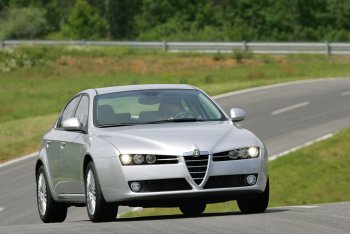
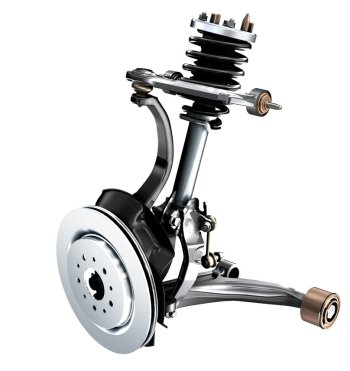
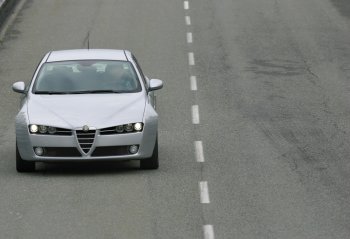
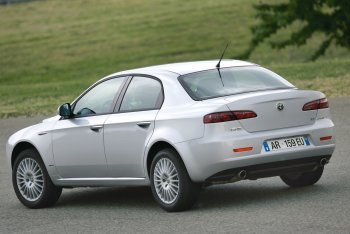 |
|
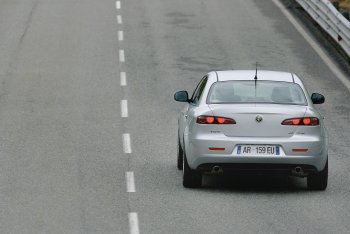
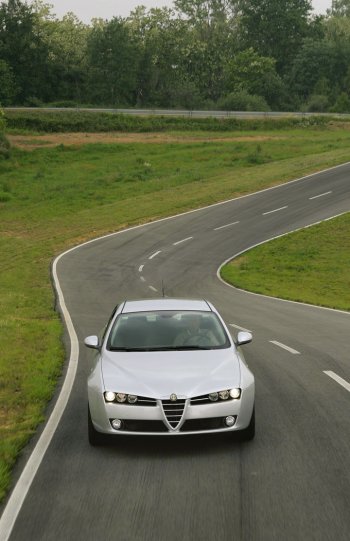 |
|
-
Q4
permanent four-wheel drive with a Torsen C self-locking
differential makes for better roadholding, entertainment
and smooth responses. Other technological archetypes
with electronically controlled joints do not achieve the
optimal balance between understeer and oversteer or the
smoothness that are innate in the Alfa 159, and
translate into superb active safety.
-
The
torque split in favour of the rear axle makes driving
even more entertaining, because it makes the car even
easier to handle, without detracting in any way from
stability during sudden lane changes on the motorway, or
other emergency manoeuvres.
-
The
ability to travel safely in poor grip conditions without
the aid of electronics in torque split for constant
driving pleasure.
We could say
that the Alfa 159 Q4 interprets four-wheel drive from the
Alfa Romeo point of view: it is basically a "mechanical"
system enhanced by cutting edge electronic technology to
guarantee maximum comfort and entertainment, combined with
superb performance and absolute safety.
Sophisticated technology for total control
The Alfa 159 adopts the most sophisticated electronic
systems to control the car's dynamic behaviour, and to raise
the dynamic limits even higher, so that they increase safety
but are not intrusive for the driver. The intervention of
these devices was studied in simulations and exhausting
track tests to ensure that the car is always entertaining to
drive. The Alfa 159's lavish array of safety equipment is described below.
ABS complete with EBD
The Alfa 159 features an excellent braking system backed up
by the BOSCH 5.7 ABS anti-lock braking device, one of the
most advanced on the market. It has four active sensors and
a hydraulic control unit with 12 solenoids. The ABS system
incorporates Electronic Brake force Distribution (EBD),
which distributes the braking effort to the four wheels so
that it prevents them from locking, maintaining full control
of the car in all conditions. The system also adapts to the
grip conditions of the wheels themselves and the efficiency
of the brake pads, thus preventing the latter from
overheating.
VDC (Vehicle Dynamic Control)
VDC is Alfa Romeo's interpretation of ESP (Electronic
Stability Program), the system that intervenes when
conditions are close to the limit and the car's stability is
at risk, to help the driver to control the car. VDC is a
sporty device, as you would expect of an Alfa, with
excellent roadholding, and lets the driver enjoy total
control of the vehicle as long as conditions are normal,
only intervening just before the situation becomes critical.
The VDC system is always engaged.
On the other hand, MSR (Motor Schleppmoment Regelung)
intervenes if he changes down suddenly in poor grip
conditions, giving torque back to the engine to prevent
skidding due to wheel lock. To do this, VDC constantly
monitors tyre grip on the road, both longitudinally and
laterally, and if it detects a tendency to skid, the system
intervenes to recover direction and stability. Sensors
measure the rotation of the car around its vertical axis
(yaw speed), the lateral acceleration and the steering lock
set by the driver (which indicates his chosen direction). It
compares these data with the parameters elaborated by an
electronic control unit and uses a complex mathematical
model to establish whether the car is taking a corner within
the grip limits, or if it is about to skid at the front or
the rear (understeer or oversteer).
To recover the correct trajectory, the system generates a
yaw contrary to the one that is causing the instability,
braking the relevant wheel (inside or outside) individually
and reducing the engine power (by adjusting the throttle
valve). This is the peculiar feature of the device developed
by the Alfa Romeo engineers. The brake adjustments are
modulated so that they are as smooth as possible (and will
not disturb the driver) and the reduction in engine power is
also limited, to guarantee excellent performance at all
times and superbly enjoyable driving.
VDC performs this complex task by communicating constantly
not only with the brake sensors and the engine control unit,
but also with:
the "Body
computer" which constantly exchanges information with the
ABS system, and the control units of the engine and
automatic transmission;
the
electronic throttle valve (which in turn dialogues with the
ABS system);
the
instrument panel (active telltales);
the steering
wheel and steering column (via the steering sensor);
the
gyroscopic sensor installed on the cabin floor to record yaw
and lateral acceleration.
ASR (Anti
Slip Regulation)
ASR (Anti Slip Regulation) is an integral part of the VDC
system, optimising traction at all speeds, assisted by the
brakes and the engine control. The device monitors the wheel
speed calculated by the ABS sensors to establish the amount
of slip and triggers two different control systems to
recover grip. When an excessive demand for power causes both
drive wheels to slip (for example, aquaplaning or
accelerating on an uneven, snow-covered or icy road
surface), the system reduces engine torque by decreasing the
throttle valve aperture and thus the air flow.
If, on the
other hand, only one wheel slips (for example the wheel on
the inside of the bend, after acceleration or a dynamic
change in the load), this wheel is automatically braked
without the driver having to touch the bake pedal. The
effect is similar to that of a self-locking differential.
This gets the Alfa 159 out of any difficulties on surfaces
where grip is poor.
ASR is engaged automatically every time the engine is
started, but can be excluded by a pushbutton on the central
console. ASR must be excluded when snow chains are fitted
because in this case, in order to transmit torque to the
ground, the wheel needs to be able to "accumulate" the snow,
with small slips that the ASR tends to avoid.
HBA and Hill-holder
The safety equipment on the Alfa 159 is completed by the HBA
system, the hydraulic electronic hydraulic braking assistant
which automatically increases the pressure in the braking
circuit during emergency braking. And by the Hill-holder
system, which maintains the braking pressure for a few
moments after the driver removes his foot from the pedal, to
simplify hill starts and prevent the car from slipping
backwards.
|
|